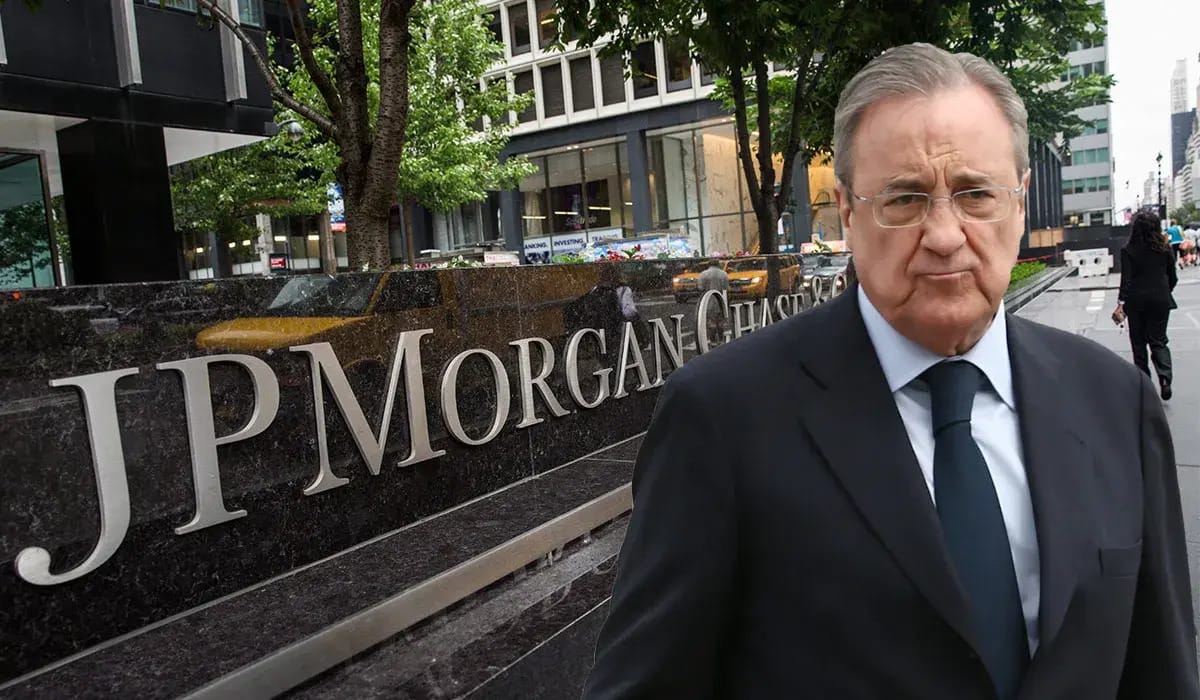- LugoSport Newsletter
- Posts
- How Real Madrid and JP Morgan Engineered the $1 Billion Bernabéu Revolution
How Real Madrid and JP Morgan Engineered the $1 Billion Bernabéu Revolution
Big clubs make big plays off the field too. Here’s how Real Madrid and JP Morgan crafted a billion-dollar deal to rebuild the Santiago Bernabéu.

Los Blancos Renovations…The renovations of the Santiago Bernabéu Stadium, home of Real Madrid, began in 2019 with the goal of modernizing the iconic venue while preserving its historic essence. Originally opened in 1947, the Bernabéu has long been a symbol of football excellence. The renovation project introduced major upgrades, including a retractable roof, a fully retractable pitch, a new 360-degree video scoreboard, expanded seating, improved VIP areas, and updated exterior design featuring a sleek, futuristic look. These changes aim to transform the stadium into a state-of-the-art sports and entertainment hub, ensuring it remains one of the world's premier football venues. JPMorgan Chase played a pivotal role in financing the extensive renovation of Real Madrid's Santiago Bernabéu Stadium. The financial arrangements unfolded in multiple phases to support the ambitious redevelopment project. |  Santiago Bernabeu, Madrid, Spain |
The Finance…In April 2019, Real Madrid secured a €575 million loan led by JPMorgan Chase and Bank of America Merrill Lynch, with additional participation from Banco Santander, Société Générale, and CaixaBank. Key Capital Partners served as the financial advisor and coordinator for this deal. The loan was structured in three tranches disbursed in July 2019, July 2020, and July 2021. Key Terms:
Collateral: No mortgage guarantees or financial covenants affecting club operations |  |
_____________________________________________________________________
Why Project Financing was beneficial for Real MadridProject financing was favorable for Real Madrid during the Santiago Bernabéu renovation (starting in 2019) for several key reasons:
|  |
_____________________________________________________________________
In SummaryThe renovation of the Santiago Bernabéu represents much more than just a stadium upgrade — it’s a strategic blueprint for the future of Real Madrid. By securing smart project financing led by JP Morgan, alongside key European partners like CaixaBank and Banco Santander, the club protected its core operations while positioning the stadium itself as a major revenue-generating asset. Innovations like the multi-layered, retractable pitch allow the Bernabéu to host a wide range of global events year-round, while new hospitality spaces, commercial zones, and a retractable roof turn it into a true multi-use entertainment hub. In the end, Real Madrid’s vision wasn't simply to modernize a historic stadium — it was to build a financial engine that ensures the club’s dominance on and off the pitch for decades to come. |  |
_____________________________________________________________________
Subscribe for more!
Further Reading:
Real Madrid Official Website — realmadrid.com
JP Morgan Official Website — jpmorgan.com
Marca — marca.com
Forbes — forbes.com
 Carolina Core FC 2024 |  Signing Day December 2023 |